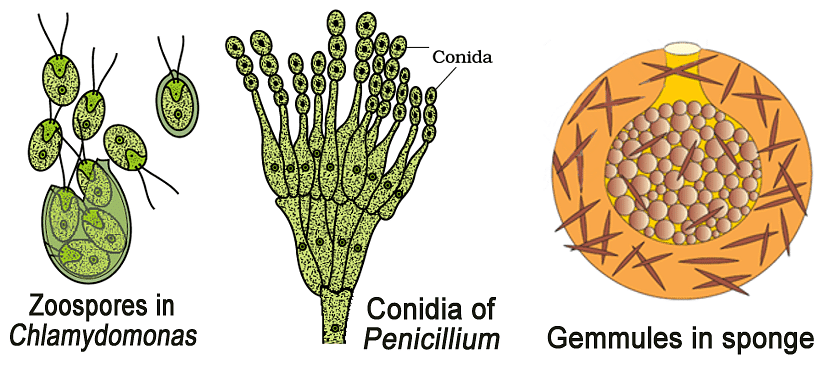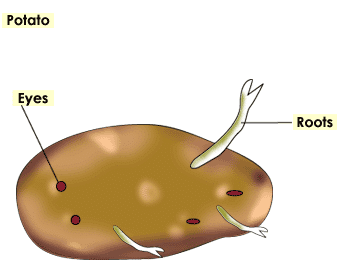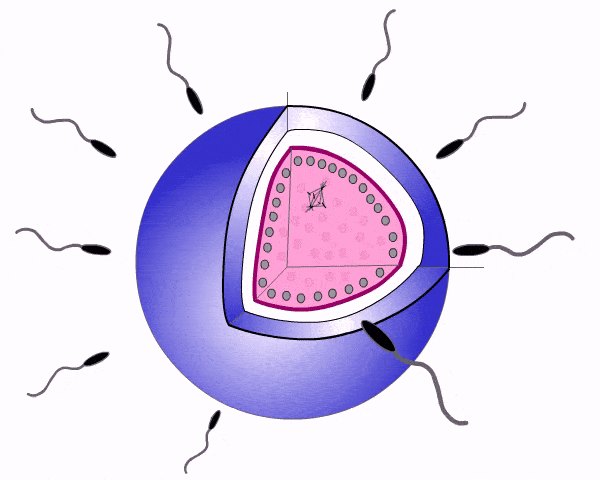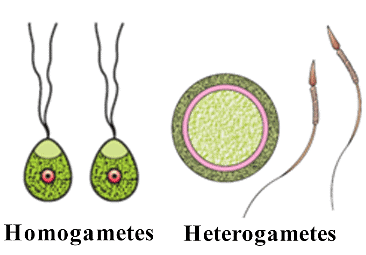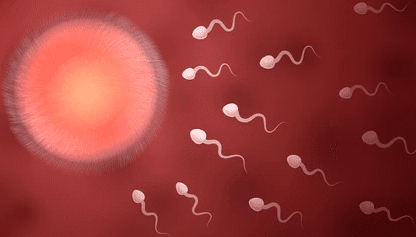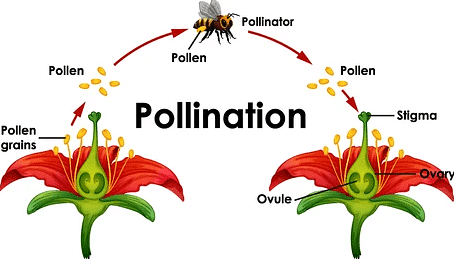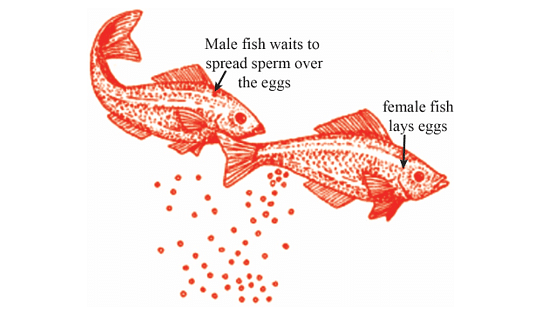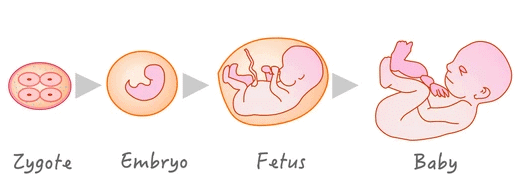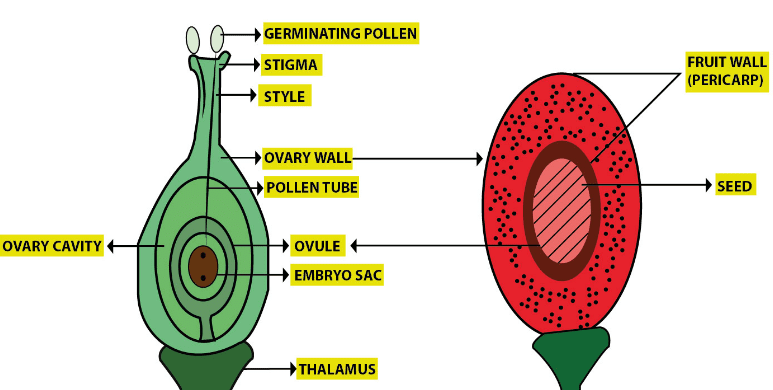NCERT Notes: Reproduction in Organisms - NEET PDF Download
| Table of contents |

|
| Asexual Reproduction |

|
| Sexual Reproduction |

|
| Pre- Fertilization |

|
| Fertilization |

|
| Post- Fertilization Events |

|
Life span is the period from birth to the natural death of an organism. After the death of living organisms also, the population is maintained by the process of reproduction.
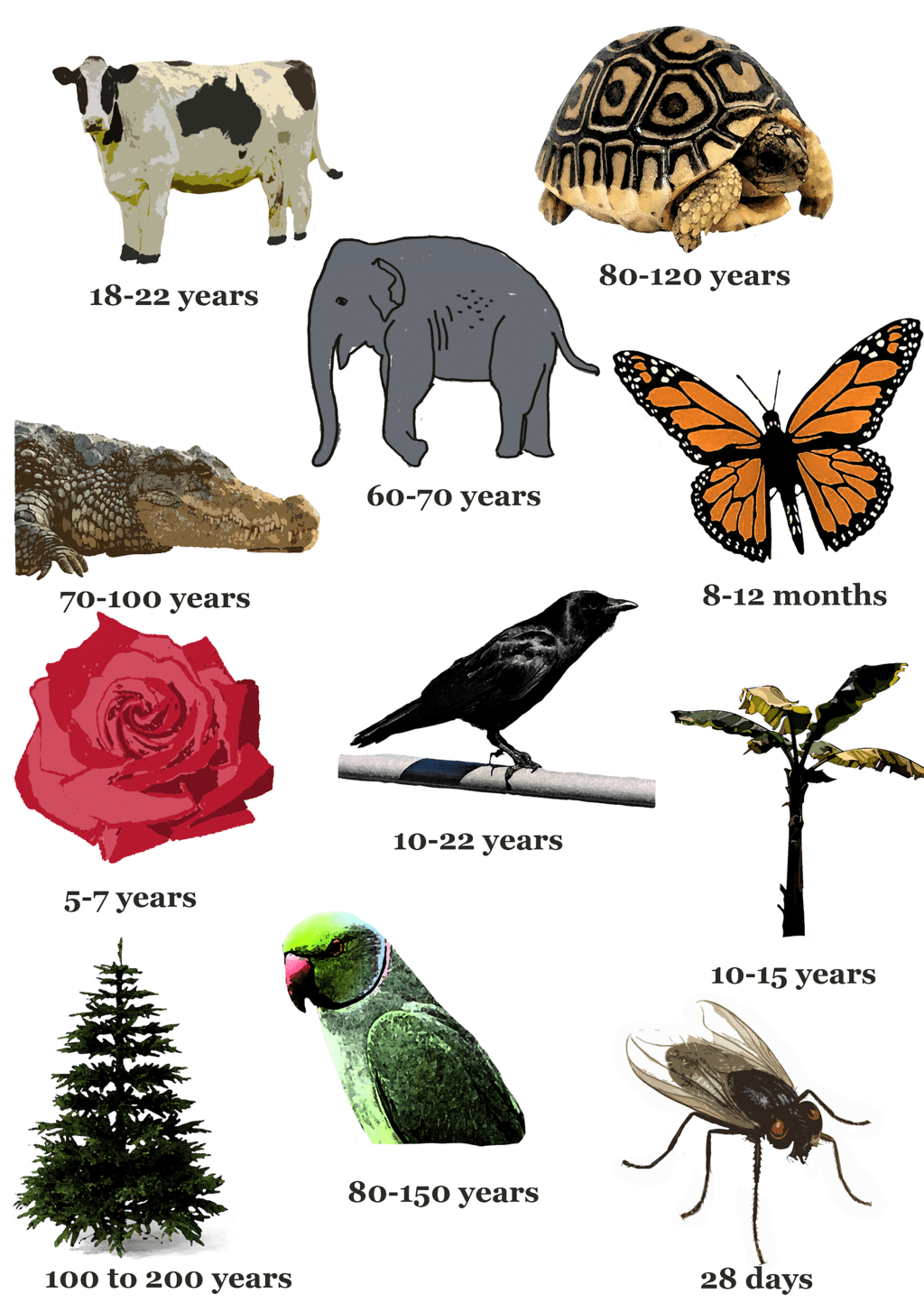 The lifespan of different OrganismsReproduction is the biological process by which an organism produces its offspring similar to itself. The offspring grows, matures and in turn produces new offspring. By the process of reproduction, all living organisms maintain their population and ensure the continuity of species.
The lifespan of different OrganismsReproduction is the biological process by which an organism produces its offspring similar to itself. The offspring grows, matures and in turn produces new offspring. By the process of reproduction, all living organisms maintain their population and ensure the continuity of species.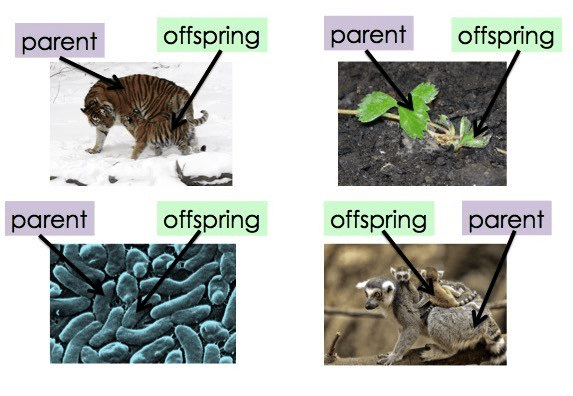 Reproduction in Plants & Animals give rise to similar offsprings
Reproduction in Plants & Animals give rise to similar offsprings
Reproduction is of two types:
- Asexual Reproduction
- Sexual Reproduction
Asexual Reproduction
- The reproduction in which an offspring is produced by single parent without the fusion of gametes is called asexual reproduction.
- A single parent produces offspring and the off springs are exact copies of their parents.
- The off springs are genetically and morphologically similar and are referred to as clones.
Characteristics of Asexual Reproduction
- A single parent is involved, so no fusion of gametes.
- Only mitosis takes place.
- Rapid multiplication
Modes of Asexual Reproduction
- Binary Fission: The parent body divides in to two equal halves and each half grows in to an adult.
Example: Amoeba, Paramecium. Binary Fission in Amoeba
Binary Fission in Amoeba - Budding: small bud is produced due to the cell division at one particular site which remains attached initially to the parent cell and eventually gets separated and matures into a new individual.
Example: Yeast Budding in Yeast
Budding in Yeast
Asexual Reproductive Structures
- Members of kingdom fungi and simple plants reproduce through special reproductive microscopic motile structures called as zoospores.
Example: Chlamydomonas - Other common structures are conidia in Penicillium, buds in Hydra, gemmules in sponge.

Sporulation occurs by tiny, single-celled, thin-walled spores that are extremely resistant to environmental extremes. The spores form new individuals. It commonly occurs in Monera, Protista, Fungi and Algae.
Spores formed can be of following main types:
Fragmentation occurs by breaking of the parent body into two or more parts, each of which grows to form an independent individual, e.g. algae like Spirogyra and bryophytes such as Marchantia, Riccia.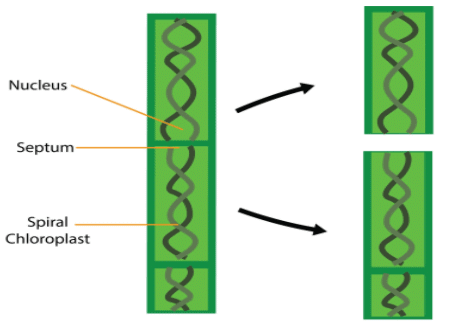 Fragmentation in SpirogyraRegeneration is a type of asexual reproduction in which the missing part of the organism is repaired by the proliferation of cells, e.g. Hydra, planaria and sponges.
Fragmentation in SpirogyraRegeneration is a type of asexual reproduction in which the missing part of the organism is repaired by the proliferation of cells, e.g. Hydra, planaria and sponges.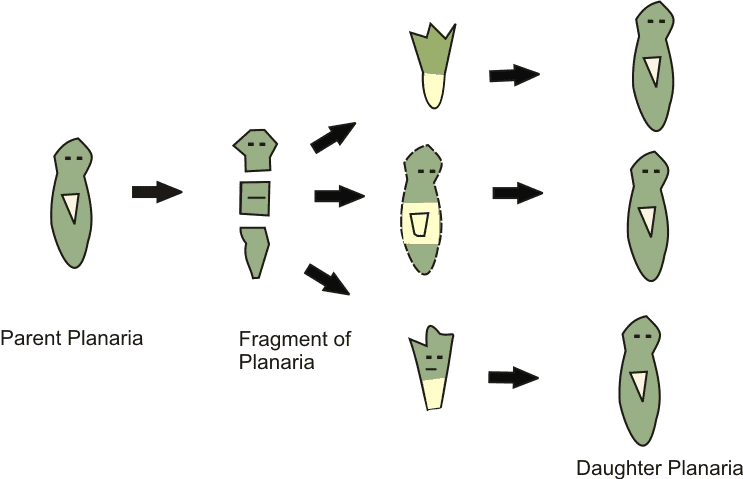 Regeneration in Planaria
Regeneration in Planaria
Vegetative propagation-
In plants, the vegetative parts of the body of the plant called as vegetative propagules give rise to new offspring
- Example- runner, rhizome of ginger, suckers of chrysanthemum, offset of water hyacinth, bulb of onion, eyes of potato can give rise to new offspring.
Vegetative propagules develop from some other specialized parts present in the vegetative propagules.
- Example- eyes of potato, rhizomes of banana, ginger arise from nodes present in the modified stem of these plants , adventitious buds of Bryophyllum arise from the notches present at the margin of leaves.
 Eyes of Potato
Eyes of Potato
As the progenies arise from a single parent, the progenies do not show genetic variation and do not contribute to evolution.
Sexual Reproduction
- The reproduction in which the gametes of two parents fuse to give rise to a zygote is called sexual reproduction.
- Male and female gametes are formed either by the same individual or different individual of the opposite sex.
- Because of the fusion of male and female gametes, sexual reproduction results in off springs that are not identical to the parents.
All the sexually reproductive organism have three phases in their life:
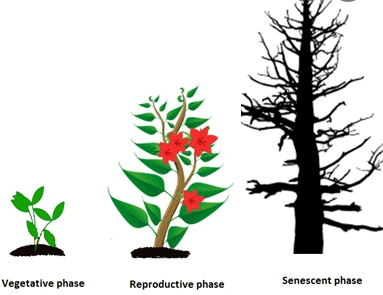 Phases of growth in a plant
Phases of growth in a plant
- Juvenile Phase- the period of growth from birth to reproductive maturity in animals is called juvenile phase and in plants this inter flowering period is known as vegetative phase.
- Reproductive Phase- the phase in which the organisms reproduce sexually is called reproductive phase.
- Senescent Phase- the phase between reproductive maturity and death of an organism is called senescent phase, characterized by gradual deterioration in the body leading to the death of an organism.
Based on the life span of plants, plants can be differentiated into 3 types-
- Annual plants- live for one year and start flowering at the end of the year.
- Biennials plants- live for two years and start flowering in the second year.
- Perennial plants- live for several years but flower only once in their life time.
Example- bamboo species flower only once in 50 -100 years.
Strobilanthus kunthiana flowers once in 12 years.
- Many mammals reproduce only during favorable season in their reproductive phase and hence these organisms are called as seasonal breeders. Example- cow, buffalo.
- Some mammals actively reproduce throughout their reproductive phase and hence are called as continuous breeders. Example- man, rabbit.
- Some cyclic changes occur in the female reproductive system of female mammals which is called as reproductive cycle.
- Reproductive cycle is of two types –
- Menstrual cycle- the cycle of primates in which changes carry on all the year with one ovulation in a month is called menstrual cycle. Example- apes, humans.
- Oestrous cycle- the reproductive cycle in non-primate females is called oestrous cycle which consists of a short period during which female receives the male for mating followed by the events of sexual reproduction Example- cow, tiger etc.
Events in Sexual Reproduction
- Events of sexual reproduction is grouped under three categories-
- Pre-fertilization events-
- The events of sexual reproduction which occurs before fertilization are called pre-fertilization events.
- Pre- fertilization events are a) gametogenesis and b) gamete transfer.
- Fertilization events- The process of fusion of male and female gametes to form a zygote is called fertilization or syngamy.
 Fusion of Sperm & Egg
Fusion of Sperm & Egg
Post- fertilization events-
- A diploid zygote is formed as a result of fertilization and later the zygote develops into a new organism.
- The process of development of embryo from the zygote id called embryogenesis.
Pre- Fertilization
- The events of sexual reproduction which occurs before fertilization are called pre-fertilization events.
- Pre- fertilization events are a) gametogenesis and b) gamete transfer.
- Gametogenesis-
- The process of formation of gametes is called gametogenesis.
- Gametes are the specialized haploid cells and are of two types- male and female gametes.
 Sperms surrounding the Egg
Sperms surrounding the Egg
- When both the gametes are similar in appearance that these can be distinguished, these gametes are called homogametes or isogametes. Example- algae.

- When both the gametes are dissimilar in appearance, the gametes are called heterogametes or anisogametes and the male gamete is called antherozoid or sperm and the female gamete is called egg or ovum. Example- human, higher plants.
- Gametes are haploid even though the parent body is diploid.
- If the parent is haploid, the parents produce gamete by mitosis. Example- monera, algae.
- In diploid parents, the parents produce gametes by meiosis, the reduction division to produce haploid gametes. Example- human beings, higher plants.
- In diploid organisms, the gamete mother cells which undergo meiosis to produce gametes are called meiocytes, as a result at the end of meiosis only one set of chromosome gets incorporated into each gamete hence, the gamete becomes haploid.
- Human beings are diploid organisms and have 46 chromosomes and so the gametes contain 23, half of the number of chromosome by reduction division.
- Gamete transfer-
- The process of bringing together of male and female gamete for fertilization is called gamete transfer.
 Gamete transfer
Gamete transfer
- The process of bringing together of male and female gamete for fertilization is called gamete transfer.
- In majority of organisms male gametes are motile and female gametes are non-motile while in algae and fungi both the types of gametes are motile.
- In bryophytes and pteridophytes, gamete is transferred through water.
- In seed producing plants, pollens are transferred to the stigma by pollination.
- In bisexual self-fertilizing plants, anthers and stigma are located close to each other and so transfer of pollen grains is easy. Example- pea.
- In cross-pollinating plants, the agents like wind, insects moving for collecting nectar from the flowers help in pollination.
 Pollination by Insect
Pollination by Insect
Fertilization
The process of fusion of male and female gametes to form a zygote is called fertilization or syngamy.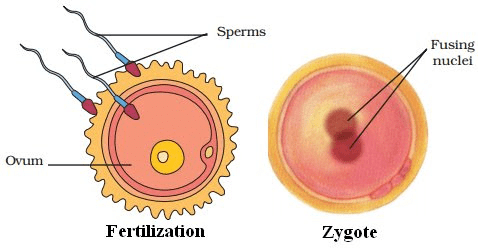 Process of Syngamy
Process of Syngamy
- Fertilization is of two types-
- In rotifers, insects, lizards female gametes develop in to new organisms without fertilization, the process is called as
External fertilization-
- In this type of fertilization, syngamy occurs outside the body of organism. Example- in most aquatic organisms like algae, fish, amphibians.
- The major disadvantage of external fertilization is they produce a large number of off springs but the off springs are vulnerable to predators.
 External Fertilisation
External Fertilisation
Internal fertilization-
- Syngamy occurs inside the body of organisms. Example- fungi, birds, mammals.
- Male gametes are released close to the female gametes.
Parthenogenesis- The process of development of new organisms without fertilisation of female gametes is called parthenogenesis. For example honey bee, rotifers, and lizards.
Post- Fertilization Events
Zygote formation
- In some organisms like fungi and algae, the zygote develops a thick wall around it which is resistant to damage and undergoes a period before germination.
- Further development of zygote depends on the type of life cycle of organisms and the environment in which they are surviving.
- In all sexually reproducing organisms, a diploid zygote is formed as a result of fertilization and later the zygote develops into a new organism.
Embryogenesis
- The process of development of embryo from the zygote is called embryogenesis.
- Embryogenesis includes cell division and cell differentiation in the zygote.
- Cell division increases the number of cells and cell differentiation helps to form tissues and organs to form a fully developed organism.
 Embryogenesis
Embryogenesis - Depending on the development of zygote inside or outside the body of the female parent, animals are classified into oviparous and viviparous animals.
- Oviparous animals are those which lay eggs and the eggs develop into new organisms. Example- amphibians, fishes, birds, reptiles etc.
- Viviparous animals are those which give birth to their young ones. Example- mammals.
- In some oviparous animals like reptiles and birds the fertilized eggs remain covered by hard calcareous shell and such eggs are called cleidoic.
- In flowering plants, the zygote is formed inside the ovule and the sepals, petals, stamens of the flower usually fall off.
- The zygote develops into embryo
- Ovules develop into seeds
 Formation of Fruit
Formation of Fruit - The ovary develops into the fruit.
- The ovary wall develops into a protective layer called pericarp.
FAQs on NCERT Notes: Reproduction in Organisms - NEET
| 1. What is asexual reproduction? |  |
| 2. What is sexual reproduction? |  |
| 3. What are pre-fertilization events? |  |
| 4. What is fertilization? |  |
| 5. What are post-fertilization events? |  |

|
Explore Courses for NEET exam
|

|


